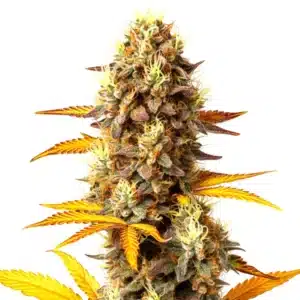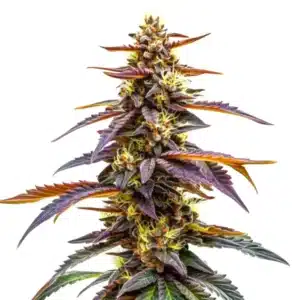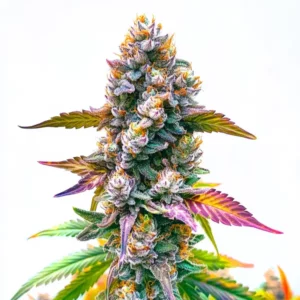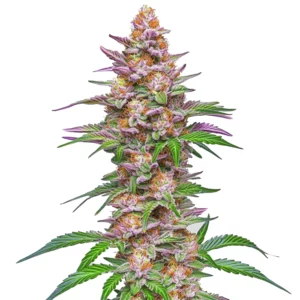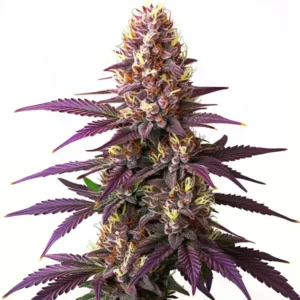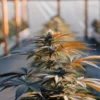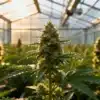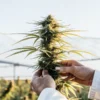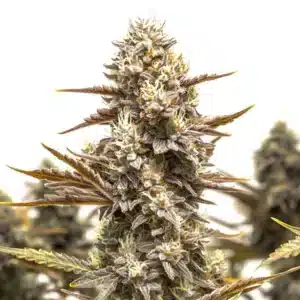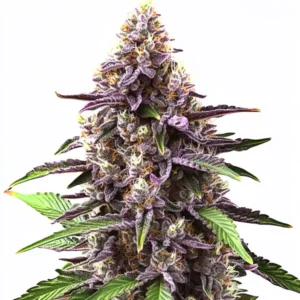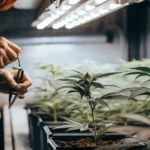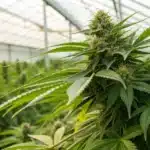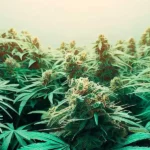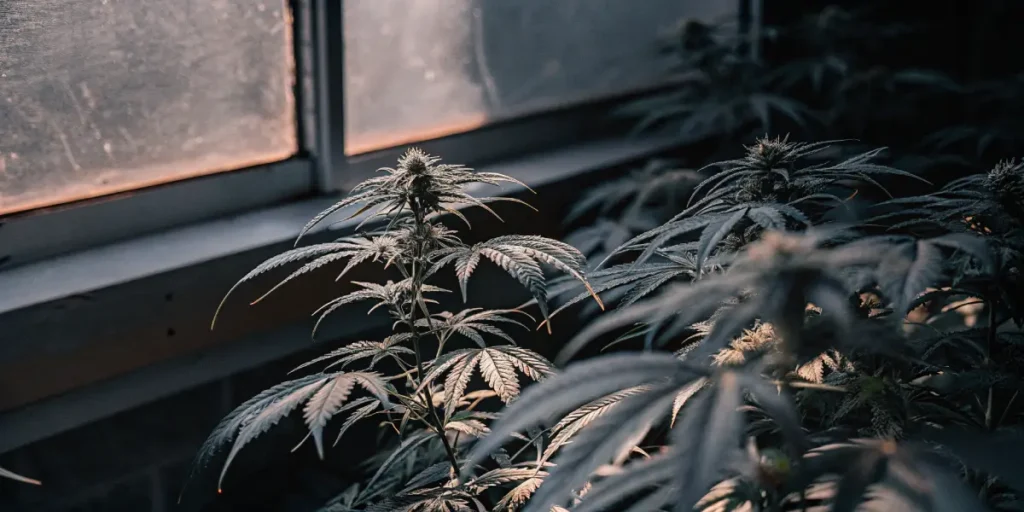
Leaf Droop vs Nutrient Deficiency in Cannabis
Cannabis growers often face challenges when it comes to leaf health. One common issue is distinguishing between leaf droop and nutrient deficiency. Both problems can affect the plant’s growth and yield, but they require different solutions. By knowing the difference, you can ensure your cannabis plants thrive.
Leaf droop in cannabis plants can be alarming. The leaves lose their firmness and start to hang limply. This issue can arise due to overwatering, underwatering, or even environmental stresses. Knowing the signs of leaf droop vs. nutrient deficiency in cannabis can save you time and resources.
Recommended Strains
Fire OG
|
|
THC | 18% - 22% (Medium) |
|
|
Type | Feminized |
|
|
Yield | Medium |
|
|
Phenotype | 70% Indica / 30% Sativa |
Fire Alien Strawberry x Mac Rillaz F1
|
|
THC | 24% - 26% (High) |
|
|
Type | Feminized F1 |
|
|
Yield | High |
|
|
Phenotype | 70% Indica / 30% Sativa |
Nutrient deficiencies, however, manifest in different ways. Instead of drooping, leaves may turn yellow, develop spots, or show other signs of distress. Identifying these symptoms is crucial for proper cannabis care. Let’s delve into what causes these issues and how to address them effectively.
Cannabis Leaf Droop Causes vs Nutrient Issues
Leaf droop is typically a sign of water-related stress. Overwatering is a common culprit. It leads to waterlogged roots, preventing them from absorbing oxygen. Conversely, underwatering causes the plant to conserve water, resulting in droopy leaves as well.
Environmental factors like temperature and light can also cause leaf droop. Excessive heat or cold, or inadequate light, can stress the plant, leading to drooping. Recognizing these cannabis leaf droop causes vs. nutrient issues can guide you in adjusting care practices accordingly.
It’s important to consider the growing medium as well. Soil that retains too much moisture or drains poorly can exacerbate water-related stress, contributing to leaf droop. Utilizing a well-aerated medium can mitigate these problems and promote healthier root systems.
Moreover, knowing the specific demands of your cannabis strain can aid in preventing issues. Some strains may require more frequent watering, while others thrive with less. Tailoring your care routine to meet these needs can reduce the occurrence of leaf droop and enhance overall plant health.
Promos & Deals
Identifying Nutrient Deficiencies in Cannabis Leaf Droop
Nutrient deficiencies are another challenge for cannabis growers. Signs differ from droop, often appearing as discoloration or leaf deformities. For instance, a nitrogen deficiency can lead to yellowing leaves, starting from the bottom of the plant.
Phosphorus deficiency often results in dark, purplish leaves, while potassium deficiency can cause leaf tips to brown and curl. Identifying nutrient deficiencies in cannabis leaf droop requires careful observation and sometimes soil testing to confirm what’s missing.
Visual cues are invaluable in diagnosing nutrient issues. Interveinal chlorosis, where the leaf veins remain green while the rest turns yellow, is indicative of magnesium deficiency. Each symptom can point to different deficiencies, making accurate identification crucial for effective intervention.
In some cases, nutrient lockout, where nutrients are present but unavailable to the plant, can mimic deficiency symptoms. This can result from pH imbalances or salt buildup in the soil. Regular pH monitoring and flushing the medium can help alleviate these conditions and restore nutrient uptake.
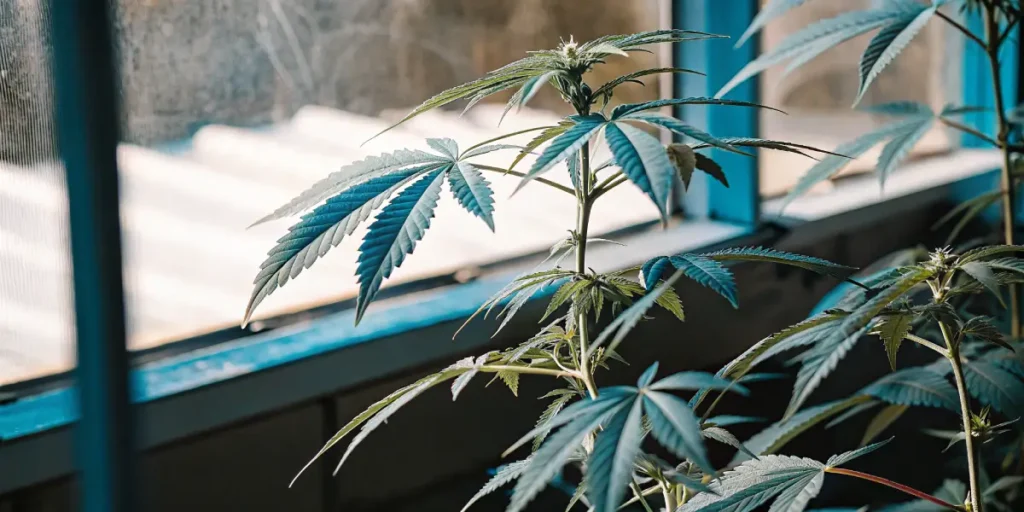
Diagnosing Cannabis Plant Leaf Droop or Nutrient Deficiency
A systematic approach helps in diagnosing cannabis plant leaf droop or nutrient deficiency. Start by checking the soil moisture. If it’s too wet or too dry, adjust your watering schedule. Ensure that your plants have proper drainage to prevent waterlogging.
Next, evaluate the environment. Are your plants getting enough light? Is the temperature stable? Consider these aspects to rule out environmental stress. Once you’ve addressed these, focus on nutrient balance. A quality cannabis-specific fertilizer can help maintain the right nutrient levels.
Implementing a regular monitoring routine can preemptively identify issues before they escalate. This includes checking for pests, which can exacerbate both leaf droop and nutrient deficiencies by stressing the plant further. Early detection is key to maintaining plant health.
Consider keeping a detailed log of your care practices, environmental conditions, and any observed symptoms. This record can be invaluable in diagnosing issues by revealing patterns or changes that might not be apparent immediately, aiding in effective cannabis plant leaf droop or nutrient deficiency diagnosis.
Distinguishing Leaf Droop from Nutrient Deficiency in Cannabis
To distinguish leaf droop from nutrient deficiency in cannabis, observe the onset and progression of symptoms. Leaf droop often appears quickly, especially after a watering mistake. In contrast, nutrient deficiencies tend to develop gradually over time.
Another tip is to examine where symptoms occur on the plant. Leaf droop is usually uniform, affecting most leaves. Nutrient deficiencies often start with older leaves or show specific patterns, such as interveinal chlorosis in magnesium deficiency.
Knowing the lifecycle and growth stage of your cannabis plant can also provide context for symptom development. For instance, nutrient demands change during flowering, and deficiencies are more likely to appear if nutrient levels are not adjusted accordingly.
Using a process of elimination can further aid in distinguishing leaf droop from nutrient deficiency in cannabis. By systematically addressing potential causes of stress, you can narrow down the possibilities and target the underlying issue more effectively.
Cannabis Leaf Droop Symptoms vs. Nutrient Deficiency Signs
When examining cannabis leaf droop symptoms vs. nutrient deficiency signs, the key is to observe closely and act promptly. Drooping leaves often regain their firmness when conditions are corrected quickly, such as adjusting watering frequency.
Nutrient deficiency signs demand a different approach. A deficiency left unaddressed can lead to stunted growth or reduced yields. Strains like Granddaddy Purple from Blimburn Seeds may require specific nutrient attention to maintain their vibrant coloration.
Regularly scheduled maintenance, such as pruning and training, can improve airflow and light penetration, reducing stress and preventing both droop and deficiencies. This proactive approach fosters a healthier growing environment.
Collaborating with other growers or accessing online communities can provide additional insights into managing cannabis leaf droop symptoms vs. nutrient deficiency signs. Sharing experiences and solutions can enhance your knowledge and improve cultivation practices.
Practical Solutions for Healthy Cannabis Growth
Maintaining healthy cannabis plants involves a proactive approach. Regular checks of soil moisture, environmental conditions, and nutrient levels are essential. Investing in quality soil and fertilizers can prevent many common issues.
Choosing the right strain for your environment also plays a crucial role. Strains like Amnesia Haze from blimburnseeds.com are well-suited for beginners due to their forgiving nature and robust growth patterns. Selecting strains that match your growing conditions can make your cannabis cultivation journey smoother.
Integrated pest management (IPM) is another vital component of healthy cannabis growth. Implementing preventative measures, such as beneficial insects or organic treatments, can protect your plants from pests that could exacerbate stress and deficiencies.
Consider utilizing technology, such as automated watering systems or climate controllers, to maintain consistent growing conditions. These tools can help minimize human error and ensure optimal environments for your cannabis plants, leading to healthier growth and higher yields.
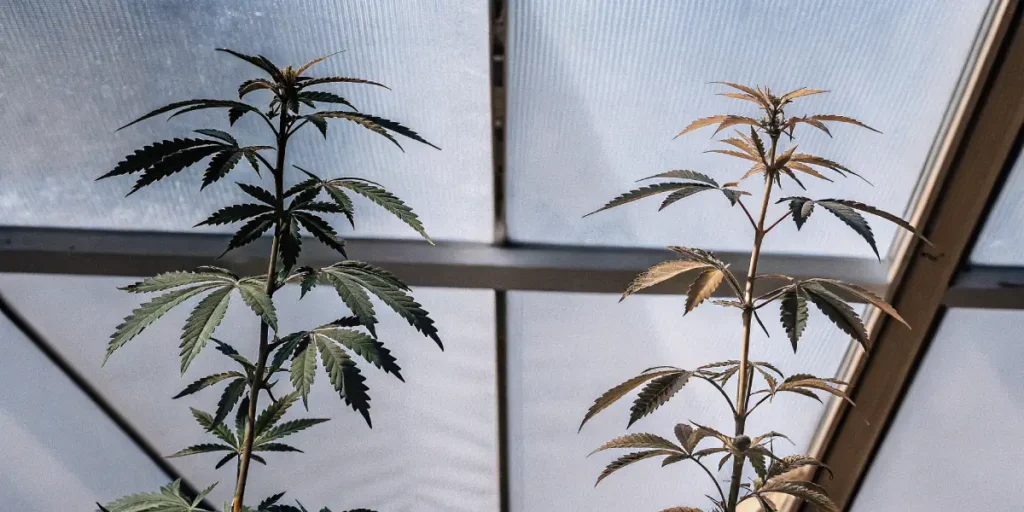
FAQs
How can I tell if my cannabis plant is overwatered?
Overwatering is a frequent issue and is often indicated by droopy leaves. Check the soil moisture level with your finger. If it feels wet, hold off on watering. Ensure your pots have adequate drainage to prevent waterlogging.
Regularly monitor your watering schedule. Cannabis plants need a balance, and over time, you’ll learn the specific needs of your chosen strains. Adjust your watering based on the plant’s needs and environmental conditions.
Besides to physical checks, consider the weight of your pots. Lighter pots may indicate that the soil is dry, whereas heavier pots suggest excess moisture. This tactile method can help refine your watering practices.
Observing the leaf color and texture can also provide clues. Overwatered plants may display a darker green hue and a limp, saturated appearance. Knowing these nuances can aid in better water management.
What are the first signs of nutrient deficiency in cannabis?
Nutrient deficiencies often present as discoloration or unusual patterns on leaves. Yellowing leaves can indicate nitrogen deficiency, while dark, purple leaves may signal a lack of phosphorus. Regularly inspect your plants for these signs.
Using a balanced fertilizer mix can help prevent deficiencies. Consider products specifically formulated for cannabis to ensure your plants receive the necessary nutrients for optimal growth.
Monitoring the growth rate and development of your plants can also signal nutrient imbalances. Slowed growth or abnormal leaf shapes may indicate a deficiency, warranting a closer examination of your feeding regimen.
Consider conducting periodic soil tests to ensure nutrient levels are within optimal ranges. This data-driven approach can provide a clearer picture of your plant’s nutritional needs and help prevent deficiencies before they manifest.
How do I fix a nutrient deficiency in my cannabis plants?
To fix a nutrient deficiency, first identify the missing nutrient. Once confirmed, adjust your feeding schedule to include the necessary elements. Soil tests or leaf tissue analysis can provide more precise information.
Introduce nutrients gradually to avoid shocking the plant. Monitoring your plant’s response will help you fine-tune the nutrient levels. Remember, cannabis strains like Gorilla Glue 4 from Blimburn Seeds might have specific nutrient preferences.
Maintaining a consistent feeding schedule is crucial. Sudden changes can stress the plant, leading to further complications. Slow, incremental adjustments are often more effective in restoring balance.
Consulting with an experienced grower or utilizing online resources can provide additional strategies for addressing nutrient deficiencies. Sharing experiences and solutions can enhance your knowledge and improve cultivation practices.
Can environmental stress cause leaf droop?
Yes, environmental stress is a common cause of leaf droop. High temperatures, poor lighting, or sudden changes in environment can stress the plant, leading to drooping leaves. Adjusting these factors can help your plants recover.
Ensuring consistent light cycles and a stable climate will minimize stress. Strains such as Blue Dream from Blimburn Seeds are quite resilient and can tolerate minor fluctuations better than others.
Besides to temperature and light, factors like humidity and air circulation can impact plant health. Maintaining an optimal range of these conditions can prevent environmental stress and subsequent leaf droop.
Consider implementing gradual adjustments rather than abrupt changes in your growing environment. This approach allows plants to acclimate more easily, reducing the likelihood of stress-induced symptoms.
Should I remove damaged leaves from my cannabis plant?
Removing damaged leaves can be beneficial as it allows the plant to focus its energy on healthy growth. However, always do so carefully to avoid stressing the plant further. Use clean, sharp tools to make clean cuts.
Only remove leaves that are beyond recovery. If the damage is minimal, consider waiting to see if the plant recovers once conditions improve. Regular maintenance will contribute to healthier plants and better yields.
Pruning techniques, such as topping or fimming, can also enhance growth by promoting bushier plants. These methods can improve light penetration and airflow, reducing the risk of stress and disease.
Keeping your tools sanitized is crucial to prevent the spread of pathogens. Regular cleaning ensures that your pruning activities aid in plant health rather than introducing new issues.


